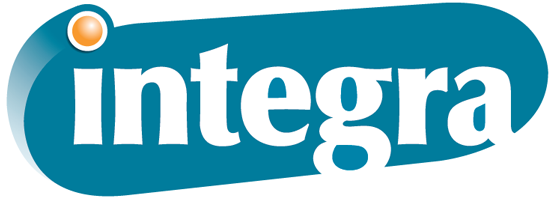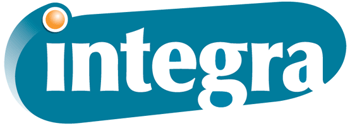What Do You Need to Know Before Publishing Your First Softcover Book? 7 FAQs Answered
April 19th, 2024 | 5 min read

What are the must-know facts and considerations for a business or individual publishing a book for the first time? What’s going to influence cost, quality and success most significantly when it comes to new book publications?
We’re Integra Graphics Synergy, and we’ve been providing book publication for customers in every industry under the sun for nearly two decades. Along the way, we’ve answered every one of these questions more times than we could possibly count.
As you read through this article, you’ll get answers to the following seven questions:
- What choices will I have in the style and formatting of my book?
- What dimensions should my paperback book have?
- How many pages does my book need to be?
- What types of book bindings can I choose from?
- What should I know before deciding who should print softcover books for me?
- Which factors will affect my book printing prices?
- Should I do short run book printing or long run book printing?
We’ll also provide links to more in-depth articles on several of these topics so you can explore each point more extensively as you make your final publishing decisions. Let’s start with your choices!
1. What Choices Will I Have in the Style and Formatting of My Book?
As you’re putting the details together for your publication, you’ll start to envision the way you want your book to look and feel, both on the outside and on the inside. Some of the most important decisions you’ll make in the design of your publication include:
- Paper type for interior pages
- Paper type for your cover
- Font size
- Margin size
- Book dimensions
- Page count
- Binding type
- Inclusion of illustrations
- Amount of color
Many print professionals will assist you in the design phase, so don’t worry if you don’t have all the details sorted out just yet. In fact, some new book publishers find it easier to remain open-minded on some of these factors so they can make certain choices for the sake of keeping pricing manageable, which we’ll dive into a little more later.
Once you’ve gotten through the first step — actually writing the book — you’ll know if you want it to have illustrations, diagrams, just text or a combination of several types of pages. Then, you’ll be ready to start finalizing the other decisions on the list. Keep them in mind as you put the proverbial pen to paper so you’re prepared for the choices when you get to the publication phase.
2. What Should I Choose for My Paperback Book Dimensions?
The majority of softcover books have a trim size — also known as the outer dimensions — somewhere around 5.5” wide by 8.5” tall. If you’ve picked up a paperback book of any sort recently, you’ve likely held a book close to this size, which offers some distinct benefits such as:
- Comfortable handling
- Various binding options
- Easy storage
While the common industry standard for soft cover printed books is 5.5” x 8.5”, some other common sizes exist as well. For instance, 6” x 9” soft cover books provide a bit more space for text and are often used for non-fiction and academic texts. Larger formats like 8.5” x 11” work well for textbooks and workbooks.
For children’s book printing, you may choose a trim size with more width than height. You’re free to make lots of fun and uncommon decisions with your dimensions for kids’ books, which typically provide more images, color and special features to hold the reader’s attention with visual and tactile elements.
3. How Many Pages Does My Book Need to Be?
Page count not only affects the thickness of your book but also plays a critical role in determining the type of binding it can have.
To adhere to certain binding requirements, especially perfect binding, your book must meet a minimum thickness — typically at least 1/8” along the spine. This thickness ensures that the pages hold together securely, providing durability and a professional appearance.
Planning your content with page count in mind is essential, as it influences both physical construction and cost of production. If the content you’ve written does not meet the appropriate thickness standard, you can try a number of strategies to reach 1/8” or more thickness, including:
- Adding content, upping your word count, thus your page count
- Selecting a larger font size to up your page count
- Choosing a thicker paper stock, such as a glossy paper type
- Adding space to your margins
- Going with smaller dimensions than average
Any one of these strategies, or even a combination of some of them, could be a great solution for your page count disparity. Just remember to keep readability and presentation top of mind as you're deciding which route to take.
4. What Types of Book Bindings Can I Choose From?
Selecting the right binding type is crucial for the functionality and presentation of your book. Popular binding options for softcover books include:
- Perfect binding: This type of binding is often used for paperback novels and non-fiction books, where a flat edge spine is created by gluing the pages together. It offers a clean and professional look.
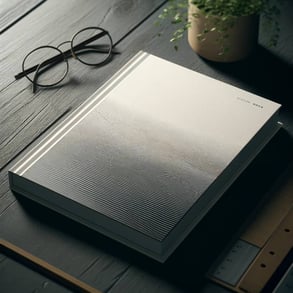
- Saddle stitching: Ideal for smaller booklets and brochures, this method involves folding sheets of paper and stapling them through the fold line. It's cost-effective for lower page counts.
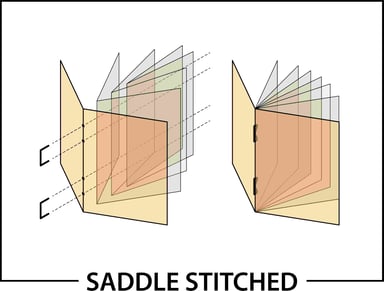
- Spiral binding: This method utilizes a coil looped through holes along the edge of the page stack, offering flexibility and the ability for the book to lay flat when open. Ideal for workbooks, manuals and other practical applications where full page rotation or flat usage is beneficial.
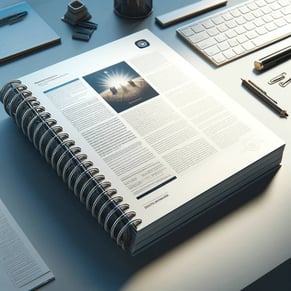
Each binding type has its advantages and is chosen based on the book’s purpose, audience and budget. The viability of each method also depends on book size and page count, so discuss these factors and your binding preferences with your printer.
5. What Should I Know Before Deciding Who Should Print Softcover Books for Me?
Choosing the right printer is pivotal. Consider printers who specialize in your book’s genre or style, and ensure that they can offer the quality of paper, printing and binding you require.
It’s also wise to inquire about each printer's capacity to handle your print volume, whether you're printing a small batch or a large run. Additionally, check for value-added services such as design assistance and distribution capabilities.
Finally, be sure you get estimates from different printers for how much your unit and overall prices will be. Ask about the factors influencing pricing, and find out what may be different about any majorly outlying cost estimates so you know what extras you're getting or giving up based on the bottom line.
6. Which Factors Will Affect My Book Printing Prices?
Several factors impact printing costs, including:
- Volume: The number of copies you print can significantly affect your unit price, with higher volumes generally reducing the cost per book. You'll pay much more per book for 50 softcover books than you would for 5,000, but the overall order price will be higher for the 5,000-copy order.
- Page count and size: More pages and larger sizes can increase costs due to added materials and more complex binding.
- Paper type and color usage: Choices between standard and premium paper types, as well as the extent of color use inside the book (black and white vs. full color), will influence your overall pricing.
7. Should I Do Short Run or Long Run Book Printing?
Your decision between short run and long run printing will depend on your immediate needs and projected sales. It will also determine whether your vendor uses a digital press vs. an offset press. Consider the differences between long- and short-run printing:
- Long run printing: This type of printing is more cost-effective per unit for large quantities, suitable for established books with predictable demand. If you're unsure whether you'll see high demand, but you still want to capitalize on lower unit prices, consider your storage options for the high stock. Your books will likely be printed on an offset press.
- Short run printing: This type of printing is ideal for limited editions or initial test markets. It allows for lower upfront costs and flexibility in updating the content. You won't need to worry about managing an inventory, but you'll pay more per book. Your books will likely be printed on a digital press.
Find a Softcover Book Printer With the Expertise You Need
Publishing a book involves numerous detailed decisions that can influence its success, and that can feel overwhelming — especially for first-time book publishers.
Fortunately, by carefully considering each aspect — from the design and dimensions to the type and volume of printing — you can effectively manage costs while achieving a quality product that appeals to your target audience.
Successfully publishing is all about what you know or who you know. If you take the time to ask the right questions and get the right book printer for your project, you'll be well on your way to a book you can be proud of — and one people will want to read!
If you think you might be interested in working with Integra Graphics Synergy for your book publication, you're welcome to learn more about what it's like to partner with our team. And if you have any questions in the meantime — whether we seem like the fit for you or you just want answers to more questions — get in touch with us below!
Topics:
